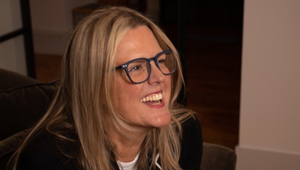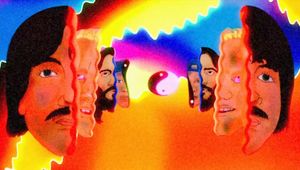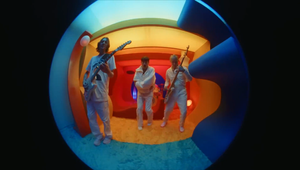
Finely Sliced: Nico Litonjua on the Key to Unlocking the Best Edit

At the early age of 11, Nico Litonjua unknowingly cut his first commercial with the help of his little cousins and his aunt’s basic editing software. This goofy home video would inspire Nico to pursue a degree in film and a career as a commercial editor. Cutting his teeth in LA & SF, Nico set his eyes towards NYC in search of opportunity, finding his home at WAX. Some of the many clients he’s cut for include Mitsubishi, NBA2K, Starbucks, Google, ESPN & Peloton.
LBB> The first cut is the deepest: how do you like to start an editing project?
Nico> The key to unlocking the best edit of a piece is to know all the footage inside and out. While notes from the shoot and selects made by creatives are helpful, it is your job to understand all available options. Therefore, the editing process doesn’t start with a cut. It begins by watching down all the footage. Every clip is an opportunity to make an edit great, so know your footage!
LBB> Non-editors often think of editing just in technical terms but it’s integral to the emotion and mood of a film. How did you develop that side of your craft?
Nico> When studying film in college, there was no shortage of student projects that needed editing. My goal was to become the best editor, so I cut everything I possibly could. Exposure to diverse stories, unique ideas and editorial challenges provided me many opportunities to hone my skills and focus on the right edit for the right story. It’s through the story that we find the emotion and mood of a film. Cutting countless projects gave me the experience needed to tap into those qualities which make a great story and edit.
LBB> How important is an understanding of story and the mechanics of story?
Nico> Story is the most important part of any film. To understand the story and its mechanics is to know what cuts to make and why. Every story gives purpose to every editorial decision. Therefore, knowing the story: its ebbs and flows, pace, crescendo and climax, allows you to make the right edits and ensure that you are showcasing the best creative vision and film possible.
LBB> Rhythm and a sense of musicality seem to be intrinsic to good editing (even when it’s a film without actual music) – how do you think about the rhythm side of editing, how do you feel out the beats of a scene or a spot? And do you like to cut to music?
Nico> When thinking about the rhythm and the pacing of a film, I first think about what music feels right for the story. Once the tone can be set musically, I can then decide the pace. A musically interesting scene doesn’t necessarily require all cuts on beat. It is the combination of hitting beats and specific notes, cutting on off-beats, knowing when to slow the pace or even when to cut discordantly to make a point. Musicality and the rhythm and pace of a cut should be based on the story. Feeling out the beats is also the right combination of predictability and surprise, keeping the edit interesting and engaging. Personally, I love to cut to music and think when it’s done properly, can take the film to 11.
LBB> Tell us about a recent editing project that involved some interesting creative challenges.
Nico> Recently, I worked on a short film that was very run-and-gun. The director, who also filmed the project, kept the camera constantly rolling with minimal takes and several inconsistencies within the footage. In the film, a man has somewhat of a hallucinogenic journey out in nature. In order to have enough content to make the piece interesting while not deviating from the story, I had to use every bit of footage and find a way to turn the pitfalls of production into the strength of the edit. I layered and blended shots, drastically adjusted the speed of footage, created disorienting scenes with flashes, jump cuts, textures, wild montages and tons of sound design; all in an effort to really lean into this idea of a 'hallucinogenic journey' our main character was taking. In the end, the style and pacing of the edit reflected the man’s experience. I was able to cut a visceral and very engaging film from very little. The early direction of the piece was more straightforward. Taking this stylistic approach, we were able to create a film that pushed the boundaries of the footage and in the end, felt right for the short.
LBB> In the US we know that editors are much more heavily involved across the post production process than in Europe - what’s your favourite part of that side of the job?
Nico> My favourite part of editing is the collaboration! Creatives and directors spend countless hours crafting and scrutinising every aspect of the film’s production. Then, they take the fruits of their labour and place it in your hands. There is no better feeling than bringing your outside perspective to the cut and coming up with something fresh, new and exciting for the team. That moment where you bring something new to the table and it meshes perfectly with the creative’s vision is the best feeling!
LBB> What’s harder to cut around – too much material or not enough? (And why?)
Nico> It is much harder to cut with less material. Usually, with less material there are less options and with less options you have to make do with certain shots. Unless the production goes perfectly with each shot being a great select (which it never does), I believe it’s better to err on the side of more footage, even if it takes more time to sift through.
LBB> Which commercial projects are you proudest of and why?
Nico> I am most proud of my Mitsubishi car campaign. It is one of the biggest projects I worked on at the time and one of the few I took from concept to final cut. I was very involved with the creative decision making early on, working closely with my CD and the art director/copywriter. We spent days trying out new ideas, reworking previous concepts and eventually got approval from the client to begin production. In the end, the film stayed true to our vision and the final piece looked amazing.
LBB> There are so many different platforms for film content now, and even in advertising something can last anything from a few seconds to a couple of hours. As an editor, are you seeing a change in the kind of projects you’re getting from brands and agencies?
Nico> The short answer is yes and no. For the times I do see a change in project type, the media buy and platform tend to dictate the creative i.e. spots that are shot for a specific aspect ratio to be viewed on a particular device (9x16 smartphones) or ads that only will run short-form as pre-roll to online content. For the times I don’t see a change, the projects stay the same with the deliverable count increasing. There are several campaigns where a standard 16x9 film is the hero spot, accompanied by several aspect ratios and cutdown edits. The volume of work goes up while the creative remains the same.
LBB> Who are your editing heroes and why? What films or spots epitomise good editing for you?
Nico> My editing heroes are simply the editors that cut the movies I Ioved while growing up. The impact of those movies inspired me to pursue a career in film. While favourite movies tend to be attached to a specific director, those directors have their go to editor so I would say some of my favourite duos are Michael Kahn with Steven Spielberg, Pietro Scalia with Ridley Scott and Joel Cox with Clint Eastwood. One of the best edited films in my opinion would be Black Hawk Down.
LBB> How does editing in the commercial world differ from the film world and TV world?
Nico> There are several differences between the two worlds, but the most important is purpose vs story. In many commercials, an editor fights to tell the best story for the film while the client’s focus is on the purpose of the ad, which is to sell the product. Today’s audience demands commercials to be more than simply a promotion of an object or service. They want to be moved and drawn towards the story to feel good about their decision to purchase. As an editor in commercials, you have to toe the line between selling something and great storytelling. It is a delicate and often difficult dance that can make or break the success of a commercial.
In Film/TV, the focus is purely creative storytelling. Success hinges on how the audience emotionally receives/reacts to the film or TV show, making the edit and creative choices that much more important. While story is the foundation for both the commercial and film/TV world, the purpose and how that dictates your editorial choices is where we see the difference.
LBB> Have you noticed any trends or changes in commercial editing over recent years
Nico> Some of the biggest trends in commercial editing are spots that utilise mixed media and user generated content (UGC). Everyone creates content nowadays. From pictures you take on your phone to the latest TikTok video you uploaded, content is all around us and clients are constantly looking for ways to innovate. In keeping up with the cultural zeitgeist, commercials are finding every way to stay engaged with a younger and more tech/creatively savvy audience i.e. let’s make mixed media spots and UGC spots. The theory is the content feels more relatable since it is so ingrained in our generation, therefore marketers adjust to try and reach today’s audience..
Another trend in commercial editing is the increase in speed and pace of cutting, a product of an audience with a shorter attention span who’s more desensitised to older styles of advertising. Therefore, we need to cut faster with more visceral editing to keep up interest among viewers. This includes commercials that are not only quick and fast paced but even short in duration. Much to the editor’s chagrin, there is a case to be made for a :06s commercial being enough time to convince a viewer to make a purchase.













